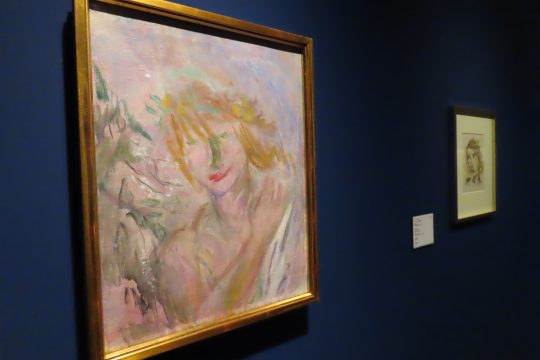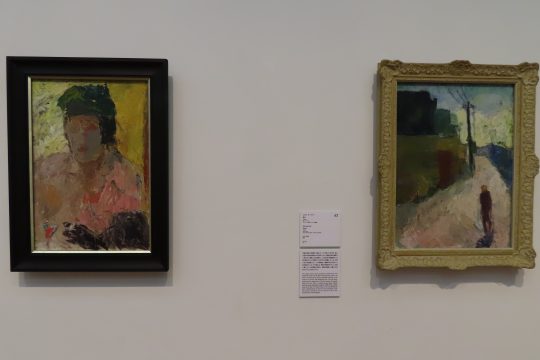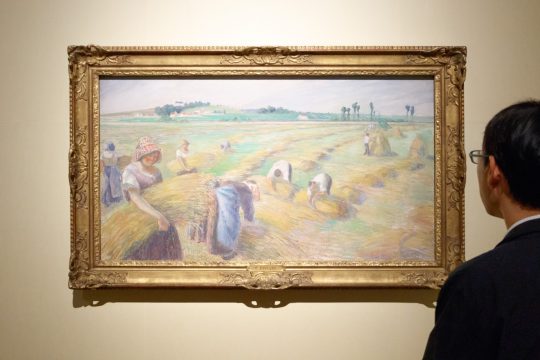Tokyo National Museum

Tokyo National Museum, Japan Agency for Cultural Affairs, Japan Art and Culture Promotion Organization will hold "Japan Yoroi!" From Wednesday, July 17, 2019 as a family-oriented planning, parent and child gallery for summer.
Japan's Yoroi (Kai) is a comprehensive art product that brings together various craft techniques while being a tool to protect the warriors. In order to show off on the battlefield, eye-catching beauty is also required, and its design strongly reflects the preference of warriors.
A gallery of parents and children who introduce in a way easy-to-understand the structure of a complex that looks complicated by the real armors made in the middle ages and modern times, and the production samples made in the modern day, etc. A hands-on display where you can touch and wear covers with a variety of parts, and a Japanese cultural experience "Japan's Yoroi!" It's a project that you do not know, do not know, understand Japan better, and more like it.
Parents and children's gallery Yoroi in Japan!
https://www.tnm.jp/modules/r_free_page/index.php?id=1967&lang=en
Parents and children's gallery "Japan Yoro!"
[July 17 (Wed)-September 23 (Mon, Holiday) Main Building 2F Special 2 Rooms]
This exhibition showcases the sample of Kai made in the present age and the Kai used in the Middle and Early Ages, and conveys the complicated yet highly developed craft techniques in an easy-to-understand manner.
For example, in the vicinity of the Kai, which was made about 500 years ago, we will display a sample that reproduces only the part of the grass that protects the waist area.
(3) A piece of small curd like a piece of leather called a small bill (Kozane) piled up sideways, (2) one that is coated with lacquer and connected in a row, (3) 3) It is what was spelled together in the vertical row by silk braid. By displaying these at the same time, you can visually understand that Kai is made of various materials and techniques.
【Exhibition content】
Important art items Gold small note red thread middle white belly band Azuchi Momoyama period · 16th century
Kai production sample 2007 (2007) private collection
【Points of appreciation! ]
Point 1: Attention to the size and texture unique to the real thing, fine decoration!
Point 2: Materials, how to make, the part that can not be seen from the surface is the highlight!
Point 3: Read and interpret the meaning of the design!
[Nio's body legs] Azuchi Momoyama period · 16th century
The design of the torso-painted torso is said to be a Nioh's body leg because it reminds of the body of the Golden-Blaster. On the back of the torso, the letters "Heart" inverted in a circle are represented by gilt. The persimmon is a transitional pot called "Yaroshaari", in which eyebrows (white hair) are planted in the entire pot, and a back is lined. It is a tool with a real and strange atmosphere on the whole.
Japanese culture experience "Japan's Yoroi!"
[July 17 (Wed)-September 1 (Sun) Main Building 1F Special 4 rooms]
A hands-on, hands-on exhibition where you can touch an arrow and wear a headwear. In addition, you can see how many warriors are painted replicas and learn how the armor was worn.
【Experience wearing experience】
You can wear a round replica. Let's actually experience the weight of Kai!
Date and time: Japanese culture experience "Japan's Yoroi!" Friday, Saturday and August 4 (Sunday)
11: 00-16: 30 (Reception 10: 50-16: 00)
※ August 4 is only child (under 18 years old)
Place: Japanese culture experience "Japan Yoroi!" In the venue (4 special rooms on the first floor of the main building)
Capacity: Each day 22 people (only once per person. Wear time: about 10 minutes)
Participation fee: 1,000 yen (except for high school students who are under the age of 70 but under the age of 18 years old, additional admission fee for the day is required)
Inquiry: 03-5777-8600 (Hello dial)
※ Accepted on the day. Pre-registration is not possible.
※ First-come-first-served basis. If the capacity is reached, the reception will be closed before 16:00.
Related business
Family Workshop "Odo Experience!"
Among the Japanese armors, there were those made of small plates made of leather or iron, "Kozane," tied with thousands of strings. Connecting small parts together with a string is called an "end". (It is said that from "Oisuke" it has become "Da".)
It is a workshop to make a cool decoration by the technique of "Odoshi" that passes a multicolored string through the hole in the "Kigami". You can take your work home with you.
Date and time:
(1) August 20 (Tuesday) 10:00 to 12:30
(2) September 7 (Sat) 10:00 to 12:30
(3) September 7 (Sat) 14: 30-17: 00
Place: Main building underground green lion (education spread space)
Object: Pair of primary schoolchild-junior high student and the protector
Capacity: 10 sets of 20 people each time
Participation fee: 1 set 3,000 yen (except for high school students who are under the age of 18 but under 70, admission fee for the day is required separately)
How to apply: Apply using the application form on the hotel website.
Deadline for application: Must arrive on July 24 (Wednesday)
Inquiry: 03-3822-1111 (for generation) Education spread room "Odoshi experience!" Person in charge
Outline of the event
| Exhibition name | Parents and children's gallery "Japan's Yoroi!" / Japanese culture experience "Japan's Yoroi!" |
| Event period / venue | ・ Parent and child gallery "Japan's Yoroi!" July 17 (Wed)-September 23 (Mon., Holiday) Main Building 2F Special 2 Rooms ・ Japanese culture experience "Japan's Yoroi!" July 17 (Wed)-September 1 (Sun) Main Building 1F Special 4 Rooms |
| closing day | Monday, September 17 (Tuesday) ※ Opened on August 12th (Mon, Holiday), September 16th (Mon, Holiday), 23rd (Mon, Holiday) |
| Opening time | 9: 30-17: 00 (Friday and Saturday until 21:00, September 20 <Friday> 21st <Saturday> until 22:00) ※ 30 minutes prior to closing |
| Fee for viewing | General 620 yen (520 yen) / college student 410 yen (310 yen) ※ () in the group rate of 20 people or more ※ Under high school students and under 18 years old, those over 70 years old are free. Please show what you know of age when you enter. ※ A group rate is for persons who have visited with children (under high school and under 18 years old) (up to 2 companions per child). ※ The disabled person and one carer are free. Please present the disability certificate etc. at the time of admission ※ Special exhibition "Sangokushi" (July 9 <Tue>-September 16 <Month, Holiday>) requires a separate ticket. However, following junior high school students are free ※ There is no fee for the fee for respect for the old people (September 16 <Mon./Congratulation>) |
| Official site | https://www.tnm.jp/?lang=en |
<About Japan Expo>
It is a large-scale national project that brings together all the strengths of relevant ministries, ministries, cultural facilities, local governments, private organizations, etc., centering on the Japan Agency for Cultural Affairs and the Japan Administrative Agency for Japanese Culture. With the holding of the 2020 Tokyo Olympics and Paralympic Games, art exhibitions, performing arts performances, cultural arts festivals, etc. that embody "beauty of Japan" from "Jomon to the present day" Under the theme, it will be developed nationwide in all seasons.
URL: https://www.ntj.jac.go.jp/nihonhaku/
Article Provided by:Kokosil Ueno






















